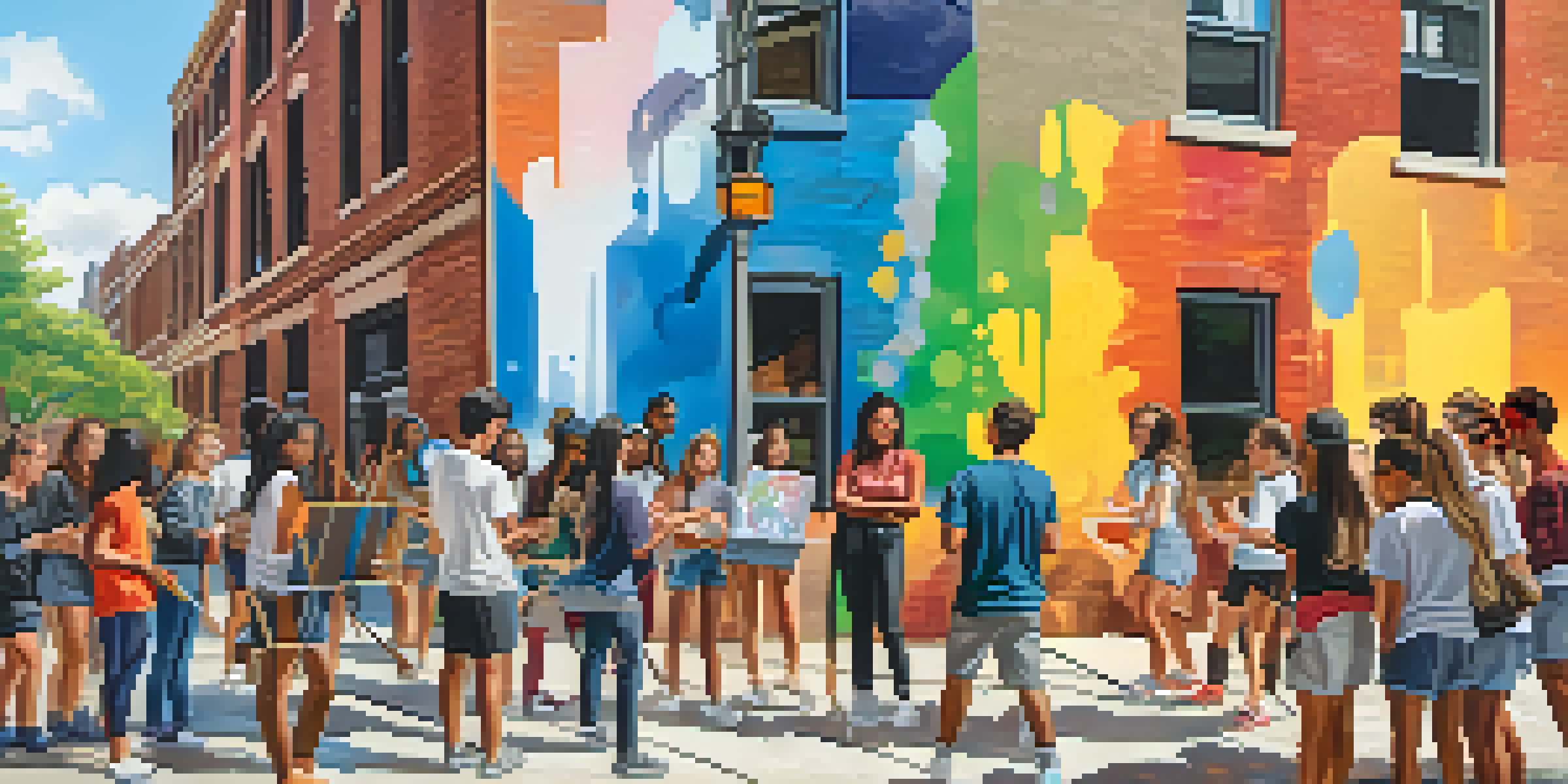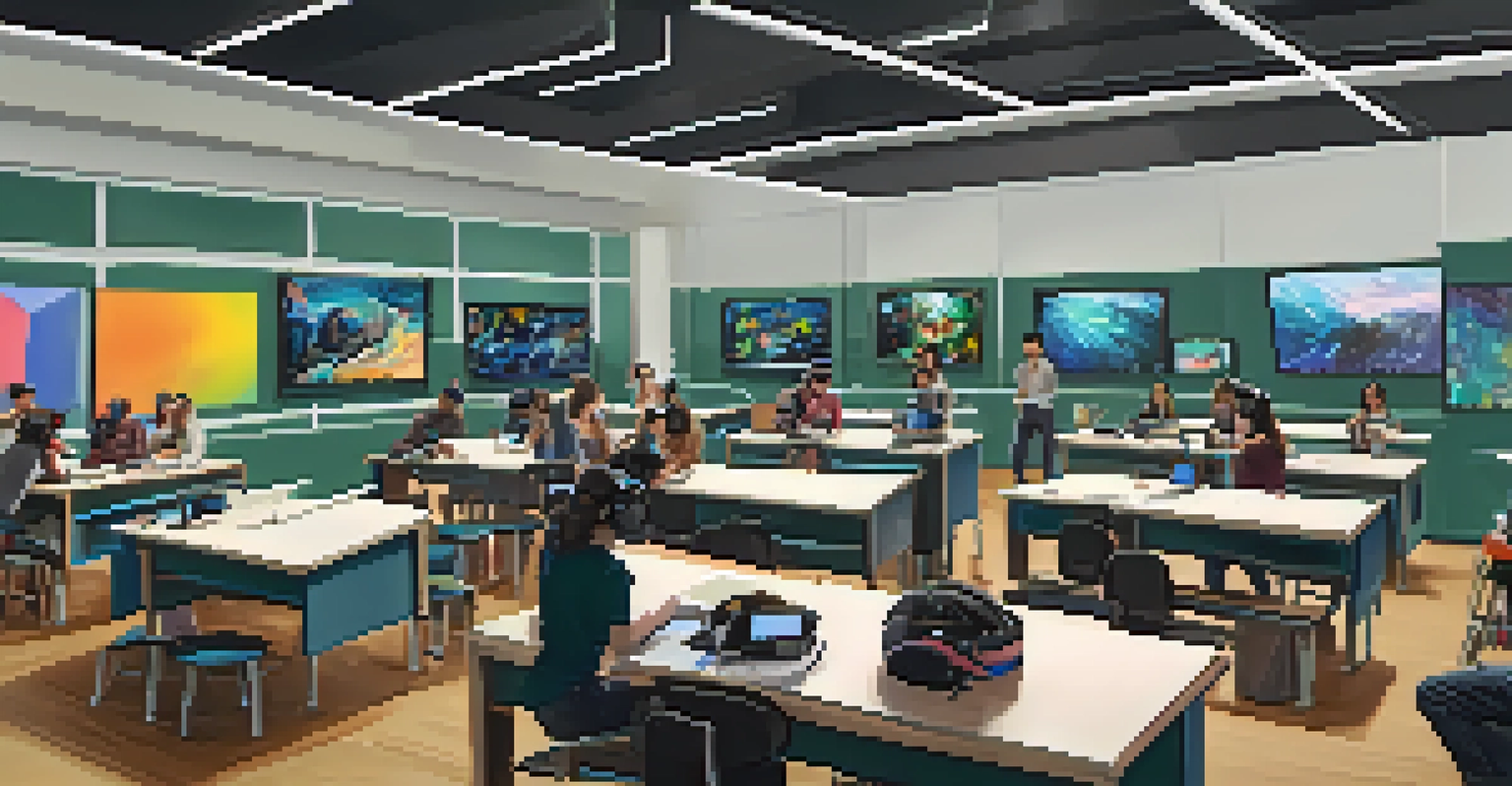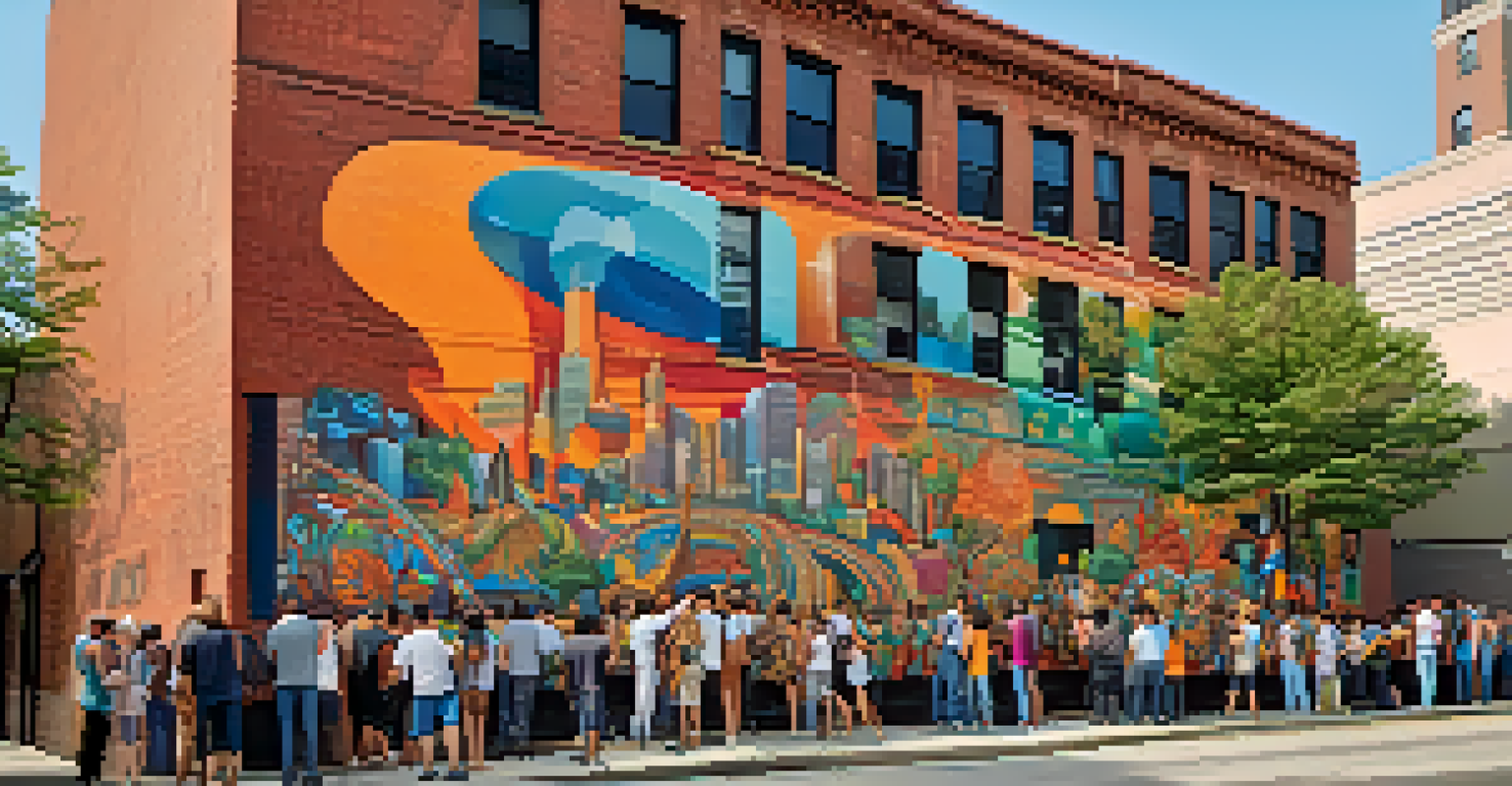The Influence of Chicago's Art Schools on Local Culture

The Legacy of Chicago's Art Schools in Creative Expression
Chicago's art schools have been pivotal in cultivating creative talent for generations. Institutions like The School of the Art Institute of Chicago (SAIC) and Columbia College Chicago have produced influential artists who have made significant contributions to contemporary art. This legacy not only enriches the local art scene but also positions Chicago as a hub for artistic experimentation.
Every artist dips his brush in his own soul, and paints his own nature into his pictures.
With a diverse range of programs, these schools have nurtured various disciplines, from painting and sculpture to digital media and performance art. Students are encouraged to explore their unique voices, leading to innovative works that reflect the city's dynamic culture. The resulting art often resonates with both local and international audiences, showcasing the city's artistic diversity.
Moreover, the collaboration between these schools and local galleries fosters a vibrant ecosystem where emerging artists can showcase their work. Events such as exhibitions and open studios allow students to engage with the community, further solidifying the connection between education and cultural expression in Chicago.
The Role of Art Schools in Shaping Cultural Identity
Art schools in Chicago play a crucial role in shaping the city's cultural identity. They attract a melting pot of students from various backgrounds, each bringing their own perspectives and experiences. This diversity enriches the school environment and contributes to a broader understanding of art as a reflection of society.

As students collaborate on projects, they often draw inspiration from their cultural heritage, leading to artworks that address social issues and celebrate community narratives. This exchange of ideas fosters a sense of belonging and unity, which is vital in a city known for its rich history and cultural complexities. Through art, these schools facilitate conversations that resonate within and beyond the local community.
Art Schools Shape Cultural Identity
Chicago's art schools foster diversity and collaboration, enriching the city's cultural identity through creative expression.
Additionally, the influence of guest artists and visiting lecturers adds depth to the educational experience. These professionals share their insights and techniques, further inspiring students to engage with cultural themes. This constant dialogue between students and established artists ensures that the cultural identity of Chicago continues to evolve.
Community Engagement Through Art Programs
Community engagement is a cornerstone of many art schools in Chicago. Programs often extend beyond the classroom, inviting local residents to participate in workshops and collaborative projects. This not only democratizes art but also encourages community members to express themselves creatively, fostering a sense of ownership over the local culture.
Art is not freedom from discipline, but disciplined freedom.
For example, initiatives such as public murals and community art projects allow students to work alongside neighborhood residents, creating art that reflects the community's identity and aspirations. These collaborations often lead to transformative experiences for both students and community members, bridging gaps and building relationships through shared creative endeavors.
Moreover, art schools frequently host events that showcase student work to the public, further integrating the art community with local culture. These events create opportunities for dialogue and connection, reinforcing the idea that art is not just for galleries but is a vital part of everyday life.
The Intersection of Technology and Traditional Art Forms
In recent years, Chicago's art schools have embraced technology, creating a unique intersection between traditional and digital art forms. Programs incorporating digital media and design have opened new avenues for artistic expression. This blend of techniques enriches the local art landscape, making it more relevant to contemporary audiences.
Students are experimenting with various technologies, from virtual reality to interactive installations, pushing the boundaries of what art can be. This innovation not only attracts attention from art enthusiasts but also positions Chicago as a leader in the evolution of modern art education. By embracing technology, these schools are preparing students for the ever-changing demands of the art world.
Community Engagement Through Art
Art programs in Chicago actively involve local residents, creating a sense of ownership and connection to community culture.
Furthermore, this fusion of traditional and digital art encourages collaboration between disciplines, leading to fresh perspectives and ideas. As artists navigate both realms, they create works that challenge conventional definitions of art, inviting viewers to engage in new and exciting ways.
Influence of Notable Alumni on Chicago's Art Scene
The influence of alumni from Chicago's art schools is evident throughout the city's vibrant art scene. Graduates have gone on to achieve national and international acclaim, bringing recognition to their alma maters and the city itself. Their success stories inspire current students, illustrating the potential of an art education.
Alumni often return to the city to exhibit their work or participate in community initiatives, creating a cycle of mentorship and inspiration. This connection between past and present students fosters a supportive network that encourages emerging artists to pursue their dreams. Notable figures such as Kerry James Marshall and Theaster Gates exemplify how local talent can attain global significance.
Moreover, these artists contribute to the local culture by engaging with community projects and educational programs. Their involvement not only enriches the artistic landscape but also reinforces the importance of giving back to the community that nurtured their talents. This creates a legacy of creativity that continues to inspire future generations.
Art Schools as Catalysts for Social Change
Art schools in Chicago are increasingly recognized as catalysts for social change. Many programs emphasize the importance of art as a tool for activism, encouraging students to address pressing social issues through their work. This focus empowers artists to engage with their communities and promote dialogue around topics such as inequality, identity, and environmental concerns.
By fostering a culture of social responsibility, these schools help students understand the impact their art can have on society. Workshops and projects that center on community engagement encourage students to explore how their creative expressions can influence positive change. This empowers them to become not just artists, but advocates for the causes they believe in.
Innovation in Art Education
The integration of technology with traditional art forms in Chicago's schools prepares students for the evolving demands of the art world.
Additionally, collaborations between art schools and social organizations amplify the reach of these initiatives. Through partnerships, students have the opportunity to work on projects that directly benefit their communities, reinforcing the idea that art is a powerful force for social good. This commitment to social change is a defining feature of Chicago's art schools.
The Future of Chicago's Art Schools and Local Culture
Looking ahead, the future of Chicago's art schools appears bright, with an ongoing commitment to innovation and community engagement. As the city evolves, these institutions will continue to adapt their programs to reflect the changing cultural landscape. This flexibility ensures that they remain relevant and responsive to the needs of both students and the community.
Furthermore, the integration of interdisciplinary studies is likely to grow, encouraging collaborations across various fields such as technology, design, and social sciences. This holistic approach to education will prepare students to tackle complex challenges and create impactful art that resonates with diverse audiences.

Ultimately, the influence of Chicago's art schools on local culture will persist as they nurture the next generation of artists. By fostering creativity, social engagement, and innovation, these schools will continue to shape the city’s artistic identity and contribute to a rich and vibrant cultural tapestry.